A developed country is not a place where the poor have cars. It’s where the rich use public transport
So said Mr. Enrique Penalosa, former mayor of Bogota, Colombia. By that parameter, while India remains quite far away from being a developed nation, the city of Mumbai or Mumbai Metropolitan Region (MMR) as it is called, is perhaps even farther. The infrastructure in the city, which the former finance minister Mr. Chidambaram wanted to transform into Shanghai, has for all practical purposes completely collapsed.
It takes residents over 2 hours to commute from suburbs of Borivali/Thane to their offices in town —despite three expressways connecting the two ends of the city. Local trains are perennially packed and have become increasingly unsafe. Many railway stations would make great haunted house sets for some horror movie rather than ports for travellers. Infrastructure projects that are meant to alleviate the citizens’ sufferings are almost always delayed and eventually create more problems than the solutions they are meant to provide.
All this has of course not happened overnight. It has taken years of neglect, collective (un)wisdom of the authorities (MSRDC, MMRDA, and BMC) and their myopic view of the infrastructure requirements of the city. What else can explain a Rs 14bn sea-link project (completed after innumerable delays) connecting to the main road at right angle!
However, call it an effort to gain brownie points before the 2014 general elections or a happy coincidence, over the last twelve months, the city has seen the commissioning of a few mega projects. That they should have come up at least a decade ago is another matter. But for now, they have definitely addressed the infrastructure needs of the city – incrementally, but only partially. In this article we take a detailed look at some of these projects and a few others on the anvil.
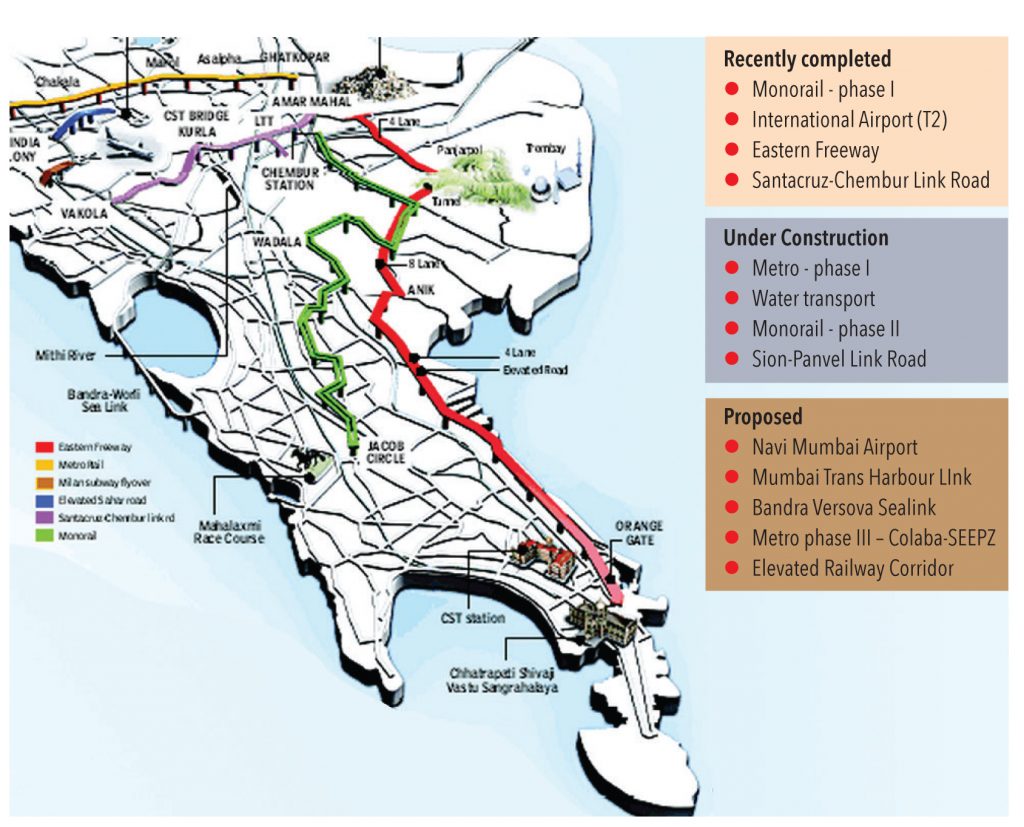
1.Eastern Freeway
Designed to decongest the city roads and provide ‘free’ hi-speed connectivity for the eastern suburbs, the eastern freeway was thrown open to the public in June 2013. The first phase of the freeway connects South Mumbai to the suburb of Chembur.The second and third phase are expected to extend the connectivity to Govandi. The freeway is expected to benefit residents of Thane and Vashi (and neighbouring regions) for their travel to South Mumbai. The total length of the freeway (including the three phases) is supposed to be almost 17 km. When it is fully complete, the freeway is expected to reduce the travel time, between South Mumbai and Govandi form the current 60 minutes to 15 minutes.
The eastern freeway is planned to be a part of the ring-road structure, encompassing the MMR. Its connectivity to the eastern express highway will complete the eastern leg of the ring road. The western leg will comprise of the sea-links (Bandra-Worli and Versova-Bandra) and coastal roads (Worli-Nariman Point). Its connectivity to the Sion-Panevl highway will also provide superior connectivity to the suburbs of Navi-Mumbai and traffic from the southern part of the country (cities like Pune).
Contractors: J.Kumar, Simplex Infra
Reporter’s Diary: We started our journey on the eastern freeway from the Orange Gate entry point. The entry road is quite narrow and has heavy vehicle traffic originating from the Mumbai port. The entry point at Wadala is already in operation, while the one at Reay Road is near completion. Currently only 13.5km of the route is operational – which took us only 8 minutes to cover and reach the Chembur exit – a smooth hiccup free journey – quite a rarity in the city. The part connecting Chembur to Mankhurd is under construction and looks atleast 2 months away from commissioning.

2.SantaCruz-Chembur link road
The project has the infamous distinction of being called the world’s most delayed infrastructure project. Conceived in 2003, the project, which provides connectivity between the eastern and western suburbs of the city, took eleven year to complete – and a few stretches still pending. So desperate was the government to commission the project before the elections that the road was thrown open to the public with many of the supporting iron pillars and structures yet to be removed. In any case, the road has significantly reduced the travel time between Chembur and Santacruz (from 60 minutes to just 10 minutes).
The SCLR is part of MMRDA’s plan to improve horizontal connectivity in the city. Before this project, the Jogeshwari-Vikhroli-Link-Road (JVLR) was the only major road providing connectivity between the eastern and western suburbs. The project also boasts of the first double-decker flyover in the country.
Contractors: Patel Engineering, Gammon India, J.Kumar, Louis Berger Group (project management consultant)
Reporter’s Diary: We got onto the SCLR from the Amar Mahal Junction on the Eastern Express Highway. It took us less than 10 minutes to reach the Kurla flyover (usual time 25-30 minutes). However,we were a tad disappointed at the new road finishing at that point – extending it beyond Kurla and Kalina, right upto Grand Hyyatt or Western Express Highway would have better served the traffic – the bottleneck of narrow roads of Kalina remain, as before. However, the perpendicular arm of the road, connecting Lokmanya Tilak Terminus (LTT) to Kurla Station is well designed, and will be extremely helpful in traffic evacuation from the railway station in all four directions. The double-decker junction is surely an image to behold and admire
Sion-Panvel Link Road
A very important project from the perspective of making the areas of Vashi and Navi-Mumbai more accessible. Even after years of promoting Navi Mumbai as an alternate to the already congested eastern and western suburbs, the city authorities have not been able to convince large sections of the city’s population to shift to this planned and well-designed satellite city. The reason has been poor connectivity to town and other suburbs. There’s just one bridge over the creek that separates the suburb from the city and the connectivity to other parts of the city remains poor.
However, the Sion-Panvel link (being built by Essel Infra on a PPP basis) is designed to rectify this issue. The project involves widening of roads connecting the city and eastern suburbs to Navi Mumbai along with another bridge on the creek (phase-II). Over 70% of the work on the project is already complete and the remaning is expected to be completed before the year ends.
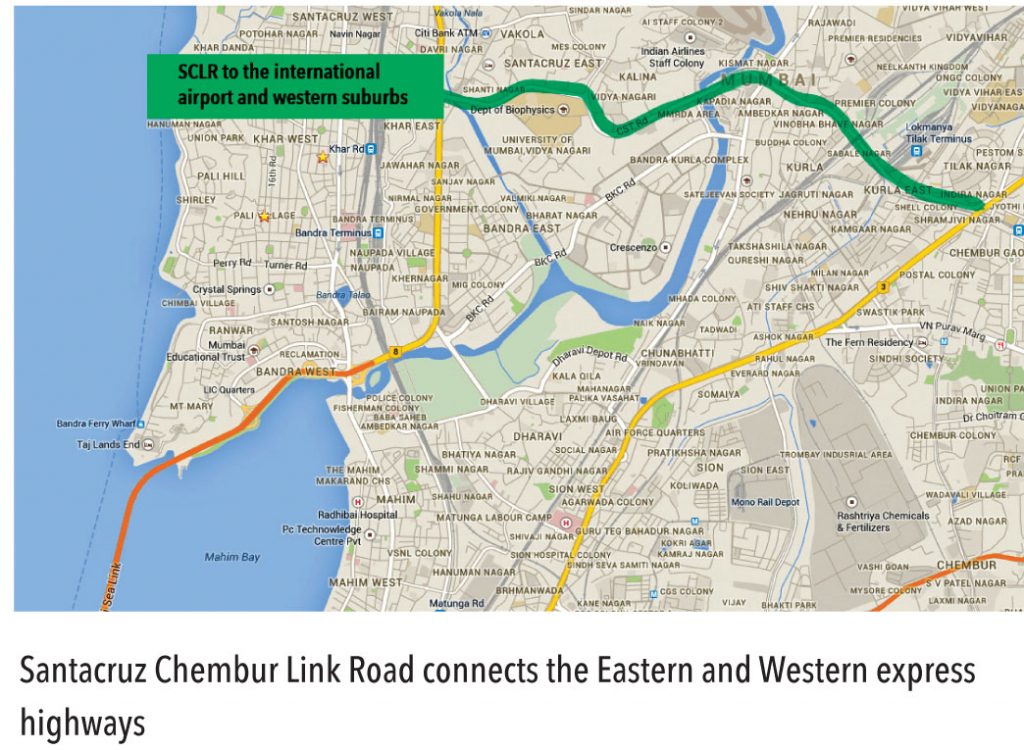
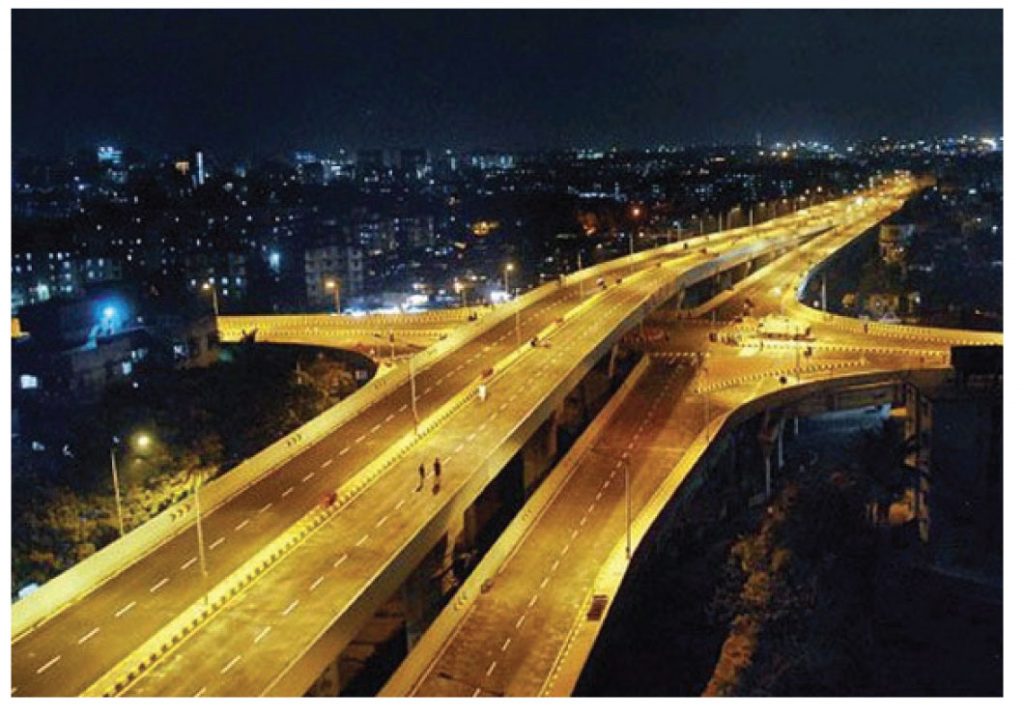
Contractors: Essel Infra, J.Kumar (sub-contractor)
Reporter’s Diary: We started out on the Sion Panvel highway from Chembur – alighting the eastern freeway. Unlike Freeway or SCLR, Sion-Panvel is a brownfield project, and involves expansion of the existing road. The road is being six laned at most places, and eight laned wherever possible. Quite clearly it will resolve the traffic woes of the resident commuting to and from Navi Mumbai to the city and its suburbs. The only bottleneck remains the Vashi toll plaza, which reduces the traffic evacuation efficiency of the road significantly.
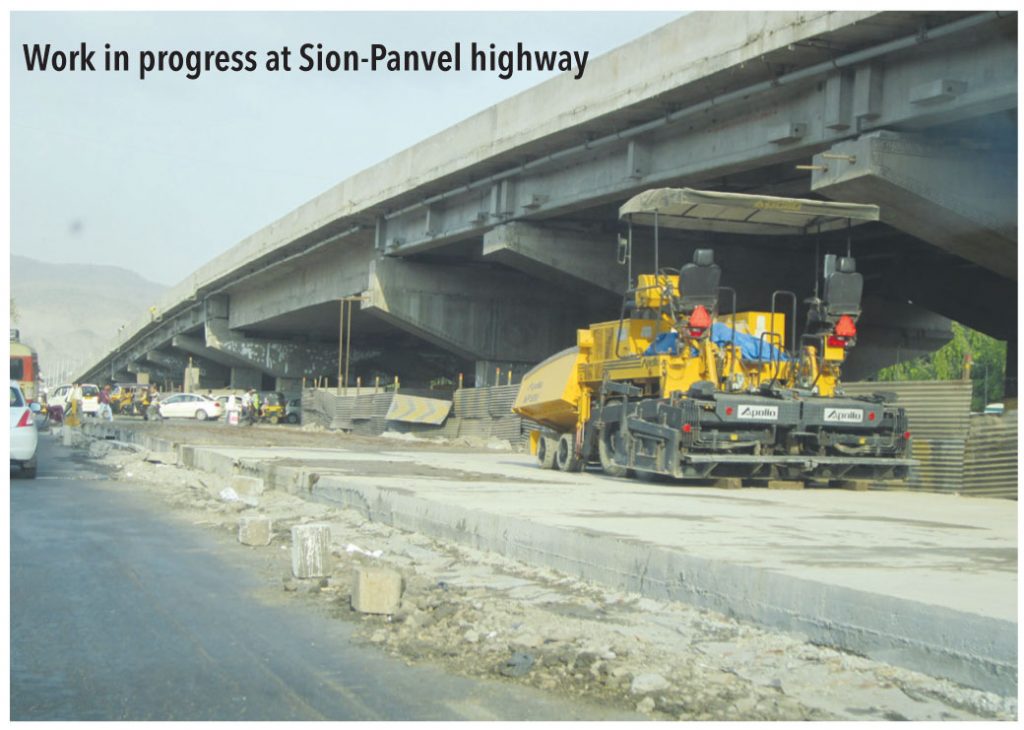
The focal point of all three projects, and many other rapid-mass-transit projects, are the densely populated eastern suburbs of Chembur and Ghatkopar.After the projects are complete residents of these regions will have four superior and quick-access options to four different directions:
• Eastern express highway to connect to Thane and northern suburbs
• Eastern freeway to connect to South Mumbai
• SCLR to the international airport and western suburbs
• Sion-Panvel highway to Navi Mumbai and eastern suburbs
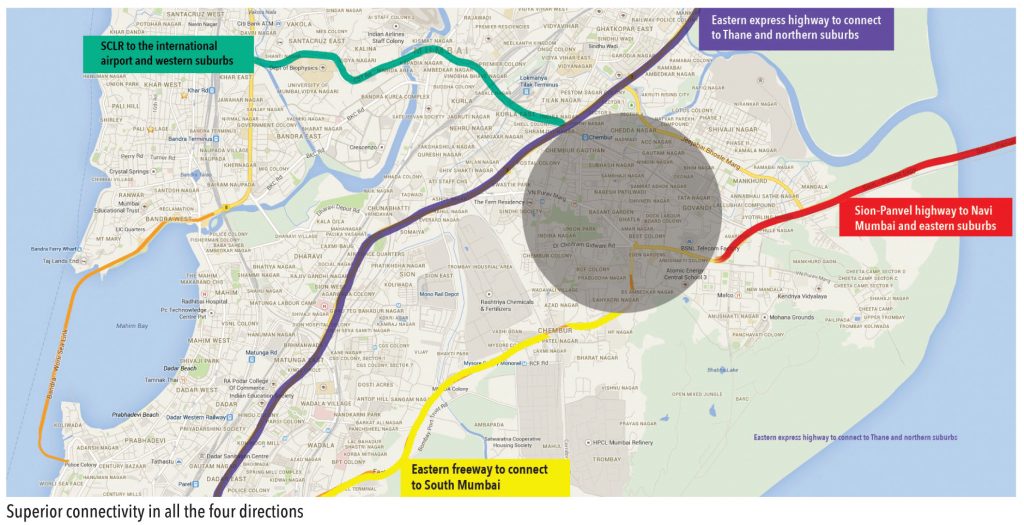
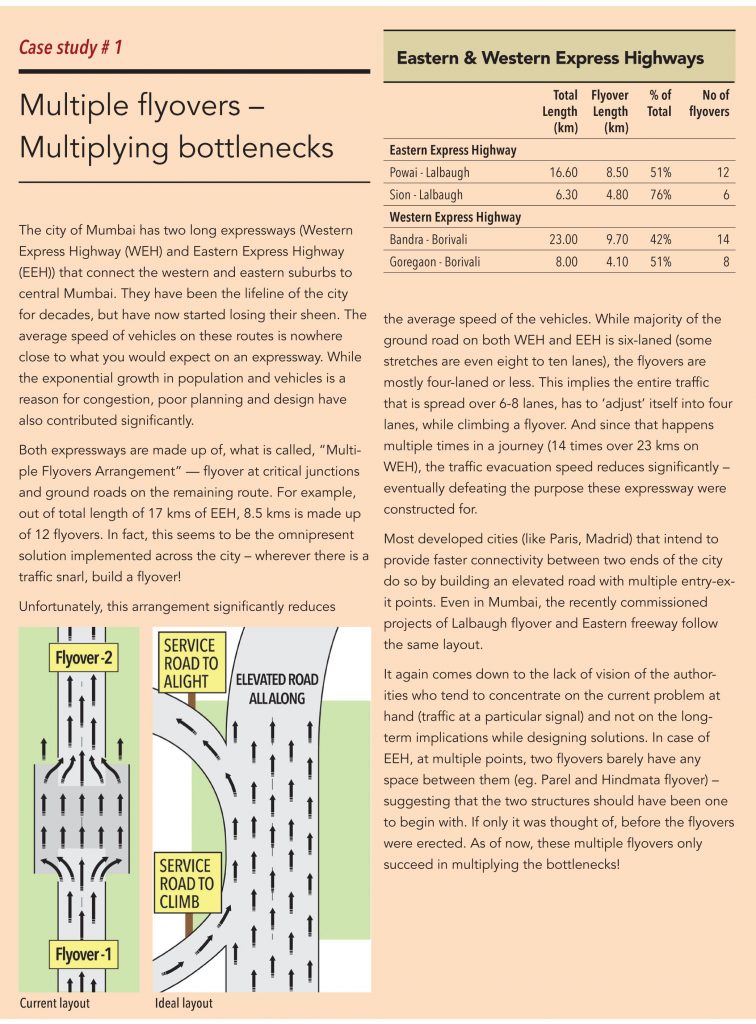
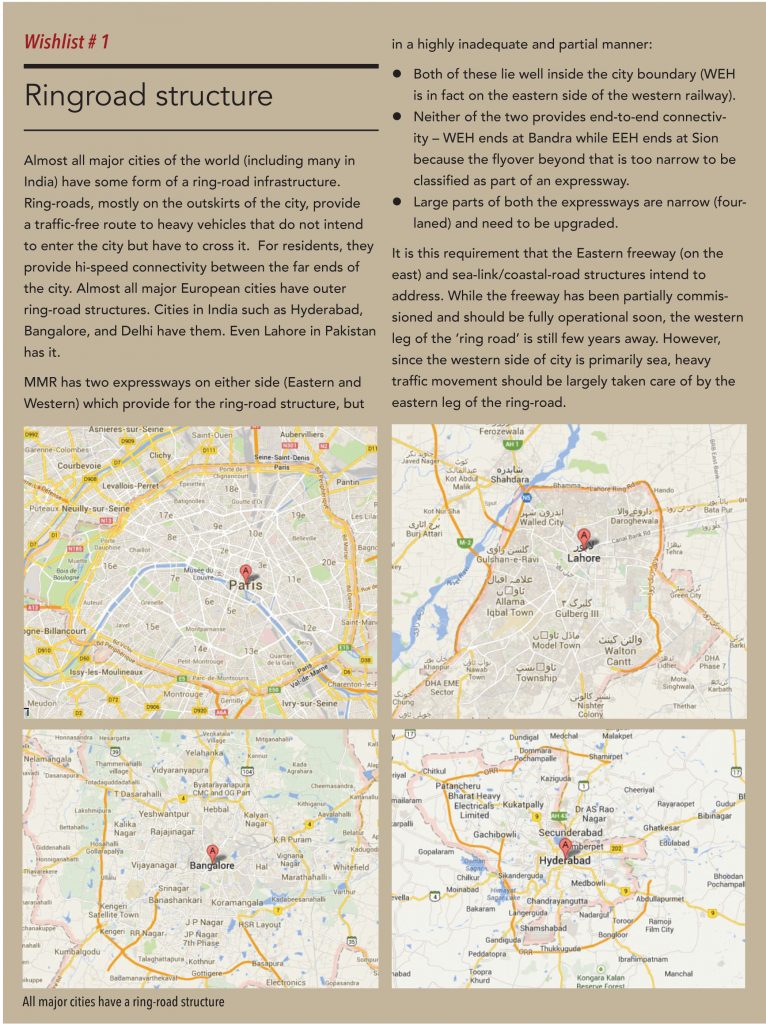
Subscribe to enjoy uninterrupted access